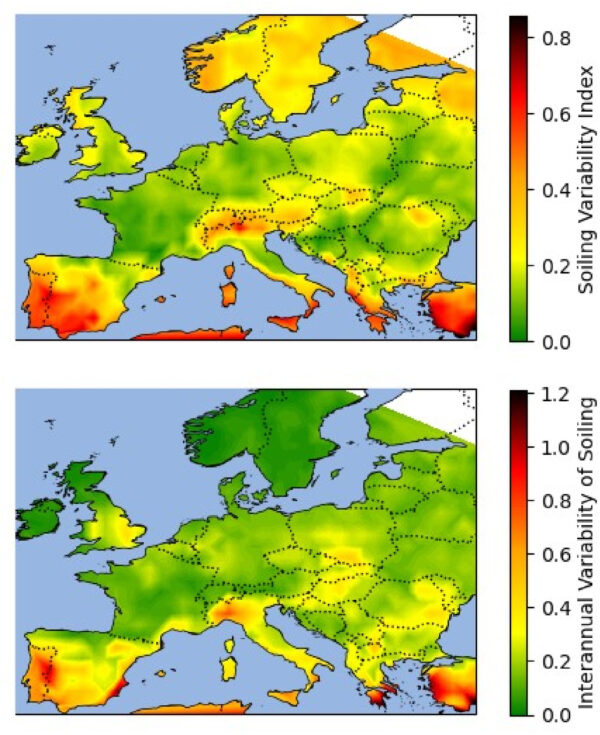A European research group has adapted a soiling model for use across the continent, analyzing scenarios with complete and partial rain cleaning to calculate energy losses and increases in the levelized cost of energy (LCOE), marking Europe’s first techno-economic PV soiling assessment.
A global team of researchers has completed Europe’s first continent-wide techno-economic analysis of PV soiling losses.
The researchers developed soiling maps by interpolating analytical data and calibrating it with ground-measured losses from sensors across Europe. They evaluated the cleaning effect of rain under two scenarios: one assuming it fully cleaned panels and another where it removed only 10% of the soiling.
“The key objectives of the present research are twofold: first, to map both energy and economic losses in PV systems due to soiling patterns, and second, to share with the community a modified version of a soiling model that allows to customize the cleaning effectiveness of rain, which could be reapplied in additional studies,” the scientists said. “The maps and the models not only offer insights into the spatial distribution of soiling but also provide a valuable resource for stakeholders involved in decision-making processes related to maintenance planning, resource optimization, and environmental impact assessments.”

Image: German Aerospace Center (DLR), Renewable Energy, CC BY 4.0
The researchers calibrated the model for both scenarios and applied it across Europe. When assuming rain perfectly cleans panels, the average annual soiling loss in electricity reaches 0.9%, with Greece showing the highest loss at 4.3% and Norway the lowest at 0.2%. In the scenario where rain cleans only 10% of the soiling, average losses increase to 5.3%, peaking at 14% in Spain and dropping to 1.2% in Norway.
On economic metrics, perfect rain clean-up leads to an average 1% increase in the LCOE, peaking at 4.6% in Turkey. The average net present value (NPV) reduction is €9.10 ($9.56)/kW, with Turkey experiencing the highest decrease at €69.30/kW. When rain cleans just 10% of soiling, the average LCOE rise reaches 5.8%, hitting 16.3% in Spain. The average NPV reduction is €45/kW, with Turkey showing the largest drop at €230.40/kW.
“The regions with the highest losses are typically also those with the highest seasonality because of the long and arid summers with usually only a few precipitation events, which can contribute in some cases to the natural cleaning of the solar collectors,” said the researchers.
They presented their results in “Photovoltaic soiling loss in Europe: Geographical distribution and cleaning recommendations,” published in Renewable Energy. Researchers from the German Aerospace Center (DLR), the Centre for Energy, Environmental and Technological Research (CIEMAT), the University of Jaén, Denmark’s European Energy, Norway’s Institute for Energy Technology (IFE), and Italy’s Sapienza University of Rome collaborated on the study.
